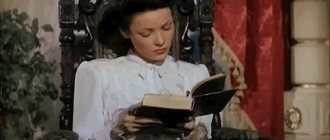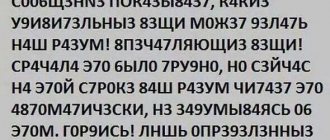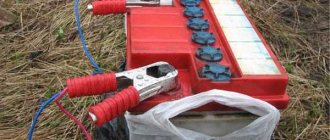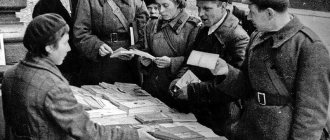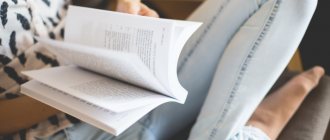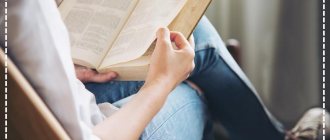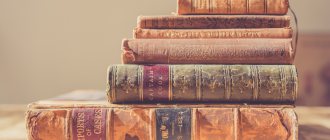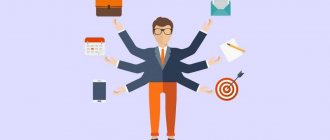Many people, reading another book, see only the surface of the work, and leave the most important thing that the author wanted to convey unnoticed. The hidden meanings and varied symbols are where the real beauty and value of the novel lies. If you are fond of reading, then this is commendable and good. But doing it right is even better. Check out the tips below and you will succeed. In just a few weeks you will be a real master, since learning to read books correctly is not as difficult as it might seem at first glance.
Reading methods
Before moving on to tips on how to learn to read, you need to pay a little attention to ways to do it. There are 4 types of them. All of them were described by M. Adler in 1940 in his research work. He identified the following methods:
- Elementary. The simplest way involves using the skills acquired in school lessons. With its help, a person simply reads the text, understands the meaning, and follows a certain plot.
- Inspection. This method is also called “across the sheet”. Following it, the reader first looks at the beginning of the sheet, and then moves to the end, while quickly trying to “rip out” the main points, having understood the meaning. This option is extremely useful and is often used in conditions of lack of time when working with a large amount of educational or work-related material.
- Analytical. With the analytical method, it is necessary to immerse yourself in the text, which is why reading books is truly effective. Slow, careful movement along the page, individual written notes, searching for explanations of misunderstood words, and using the author's references are the main components of the analytical method. His goal is 100% understanding of what he reads with complete assimilation of all the author’s thoughts.
- Research. A popular method among writers and workers in the creative or scientific fields. It requires reading several books on the same topic at once to confirm or refute any theories. This option is not suitable for fiction if you consider it in terms of pleasure rather than work.
For an ordinary person who wants to find the answer to the question of how to read books effectively, the 2nd or 3rd method will be the most beneficial. They will allow you to both have fun and learn important information. However, there is no point in considering them in detail, since you need to read correctly as a whole, and not force yourself into the framework of one method. Let's move on to the tips.
At what age to start
There are several opinions about what age you should start teaching your child to read fluently and meaningfully. Some teachers believe that you should start teaching your child before school, others - when the child enters 1st grade, and some - at an even older age.
In the beginning, experts advise teaching your child to read syllable by syllable.
According to the methods of Zaitsev, Doman, Montessori
The optimal period is considered to be from 3 to 7 years. The brain of a preschooler or first-grader remembers information quickly and firmly.
According to the Waldorf school
To firmly master the skill, children must grow to 10–12 years of age. This is due to the fact that elementary school students perceive information well when spoken at a normal speech rate. By intermediate level, the ability to understand rapid streams of phonemes will improve. Reading technique is accelerated.
Having combined and analyzed both opinions, we can say for sure that it is not worth doing speed reading with first-graders and preschoolers persistently, under pressure. It is better to postpone this until a later period, when the child is mature. In elementary school, use preparatory exercises to develop memory, attention, and articulation.
These classes are useful for increasing the pace of text assimilation in the future.
Important! For early learning of the alphabet and syllables, use Zaitsev's cubes. They can be used from 6 months of age to introduce letters in a playful way.
Take several books at once
This advice only applies to the case when it is necessary to work with serious literature that is not related to fiction. For example, when studying the traditions of a country. You need to use many books to get a complete understanding of the issue being studied, eliminating the risk of receiving false or misinterpreted information. Also, do not forget to compare what you read with your existing knowledge. And if the work is presented in several parts, then they should be read strictly in chronological order.
The benefits and advantages of speed reading
Speed reading is a useful skill for anyone who needs to develop as a person. Think about a book that has had the greatest influence on you. Now imagine how your life would change if you didn’t read it...
Ways to read faster and remember more
“But the most important thing I want to say is that you should always have a constructive purpose for reading that helps you understand why you are reading and how to apply the information you learn.”
Pavel Palagin
If it only takes one book to change your life, what can thirty books do?
When you learn to read quickly, you increase the likelihood that you will encounter some great book that can change everything. Imagine being able to read ten, twenty, or thirty books a year without having to spend a ton of time reading!
Take notes
Always keep a pencil with you, as well as several small bookmarks or a notepad. It is important to highlight significant moments so that later you can briefly review them and remember or see what previously seemed hidden. This is especially true for educational or work literature, since it will never be possible to learn something serious without notes. While reading a work of art, you can also make notes in a notebook about your thoughts about the further development of the plot.
Think about what you read
The key to correct reading is the acquired material. Mindlessly flipping through the pages of a book is not enough, especially if it contains a lot of useful information and educational material.
To learn it and not forget about the book the next day after reading it, we recommend using a number of methods:
- Read as carefully as possible. Enjoy the process. Don't be distracted by your phone, social networks, extraneous matters or other little things.
- Write notes about the most important and significant things you learned from the book. Write down catchy moments, interesting quotes, useful ideas for life.
- Write a journal entry. In it you can describe the main events, reflect your attitude towards the characters, and share your thoughts about the book. This will allow you to comprehend and better remember what you read.
- Watch film adaptations of the works you read. They will help you see a different interpretation of characters and events.
- Apply the acquired knowledge in practice.
Focus
Some people read even 5 hours a day, but at the same time they constantly lose focus, withdraw into themselves, and have detached thoughts. Since you need to read correctly so as not to waste time, such moments should not happen in your life. Try not to be distracted and get into the work. If, despite all your efforts to concentrate, a cozy atmosphere, and good health, such a problem remains, then this indicates a lack of purpose, which was mentioned in the first tip. Try asking yourself: “Why am I doing this?”
Exercises for first graders
First grade is the most difficult psychologically, but very interesting period of life. During the first months at school, the child adapts to the new team, teacher, learns discipline and learns a lot of new things. It is not recommended to start fluent reading classes in the first half of the year. A first-grader simply does not have enough strength and emotions for the additional load at home.
If you feel that your child can and wants to become the first in reading technique among his classmates, then conduct lessons in the form of a game, without forcing him to sit for a long time in front of a book.
According to Professor I.T. Fedorenko, the author of his own method of teaching reading, the effectiveness of classes depends not on the amount of time spent on the lesson, but on its quality. Organize a clear pattern: do simple exercises for 5-6 minutes two or three times a day. If a student is not in a good mood or is tired, postpone the lesson for a couple of hours, let him rest and get ready for work.
Important! Rest means a walk, active games, lunch or an extra afternoon snack. Do not allow sitting near the TV or computer. Watching cartoons or playing online games on the Internet does not relieve the student psychologically.
If you decide to study with a first grader at home, without the help of professionals, use the following exercises:
Automated syllable reading
Download it online for free or make your own syllable table.
For example, like this:
A first grader can become familiar with it while learning the alphabet.
The syllable table is used in every lesson. A first grader reads one to three lines in one lesson, gradually accelerating the pace. If training takes place in a group, then first the lines from the syllabic table are pronounced in chorus, then individually.
Thanks to the syllabary table, the student easily understands the structure of words and learns to read words faster—automatically. Letter combinations are pronounced vertically and horizontally. During the introductory lesson, it is better to carefully practice one line with the same vowel: GA, YES, etc. Read the syllables slowly, without dividing them into sounds.
The benefits of a syllabic table are invaluable in speech therapy classes: the articulatory apparatus is trained, problem sounds are identified. Thanks to the use of a table of syllables for training reading skills, while simultaneously improving speech, the child acquires spelling skills and neutralizes the tendency to dysorthography.
Choral reading
Used as a warm-up at the beginning of the lesson. Kids receive pieces of paper with text, preferably poetry, or sayings. The material is read in chorus at an average pace. Then each student pronounces the chosen tongue twister in a whisper or loudly. This trains articulation.
Set of tasks
Includes the following exercises:
- repeated reading for speed and time;
Children are offered a text. They read it on their own, quietly. The teacher times 1 minute. After stopping, children mark with a pencil the place where they stopped.
Rest for 3–5 minutes. At this time, you can speak tongue twisters. Do articulatory gymnastics.
- reading at a good pace;
We take the familiar text in our hands and read it again for a minute. We compare the first and second results. More often than not, children read familiar passages faster and make fewer mistakes. Success creates a positive attitude. Let's move on to new material.
- getting to know a new text and reading it with expression;
For lessons in which reading techniques are practiced, it is better to take texts that cannot be read fluently in a minute. Children should still have a piece of new material to practice speed reading. Read the unfamiliar part of the text in unison, quickly, but with expression.
Use a set of exercises in each lesson for 1-2 weeks.
Task "Tug"
This task is as follows: the lexical material is read together with the parent. The adult chooses a pace so that it is not difficult or too easy for the child. Two or three sentences are read in chorus, the parent falls silent, continuing to read silently.
The kid doesn’t stop either, he reads to himself, trying to maintain the set speed. After one or two sentences, the adult begins to pronounce the text out loud. If the student does not slow down, he will read the same thing with his parent.
This exercise can be done in pairs. Children distribute roles. The strong student plays the role of a tug, and the weak one pulls up behind him. For the first lessons using this scheme, use a hint: move your finger over the text while silently reading. The student who follows the strong one will continue reading aloud, guided by the partner's prompt and his speed.
Jump-stop
The exercise is like a game. Develops attention, visual memory, orientation in the text.
The task is performed as follows. A child sits at a table with a text in front of him. At the command of an adult, he begins reading at a high speed rhythm. When the order to stop is given, the child closes his eyes and rests for 10–15 seconds. Then the teacher gives the command to read.
A first grader needs to quickly find the stopping point in the text and continue reading. This is an easy way to improve attention and visual memory.
Important! No need to help find the stopping place in the book. The reception is based on the principle of complete independence.
Half
Prepare didactic material. Write words of two or three syllables on an A4 sheet of paper, large. For example, “cat”, “spoon”, “girl”. Then cut the sheets so that the words can be folded from two halves. Shuffle the cards.
Offer to find and put together parts of words in a playful way at speed. But speed is not the most important thing here.
A properly conducted lesson develops imagination and memory.
For reference! An interesting method of teaching children to read from the cradle are Doman-Manichenko cards. These are pictures with words. They are shown to the child quickly, 2-3 seconds. Four to ten a day. After 5 days, the baby will name the words written on the card. The method is based on photo memory.
Here is another interesting method, which is very simple and at the same time effective, as it helps you quickly learn to read.
Remember the subtext
Modern readers really don't know how to read books correctly. The proof is the fact that most people take novels and everything described in them literally. It is important to always remember the subtext left by the author. This can change the idea of the plot, and will also open up new facets and hidden meanings not previously noticed.
The subtext is hidden in the following:
- weather, season - weather conditions often express the feelings of characters, and seasons can have a huge symbol of the purpose of writing a novel or partially express a hidden meaning;
- the actions of the characters - the author can thus show the real world, drawing a parallel, for example, with politics;
- violence – in many works has a social or cultural meaning;
- geography - it can act in a unique role, revealing a whole separate topic, denoting a symbol, or showing the influence of the environment on the characters;
- salvation of the hero - many authors show the rebirth of the hero or a sharp change in his views by saving himself from death, for example, falling into a river and being saved, and sometimes the hero is killed, which also says a lot;
- the stigma of characters - physical disabilities can express symbols of human moral or psychological problems.
Always try to see the subtext.
From simple to complex
Speed reading training is based on the ability to perceive words as a whole, without dividing them into syllables. At the initial stage, use short words consisting of two or three sounds. For example, “house”, “cat”. In the future, the baby will not read them or recognize them by letters. He will see this word in the text and immediately pronounce it. This is the meaning of the speed reading technique.
Preparation for the lesson: write the simplest words on a piece of paper, one at a time. Show them one after the other. As you complete the exercise, gradually increase the pace of changing words. Replace three-letter lexemes with words of four–five–seven letters after a solid assimilation of the material covered.
Words (“house”, “forest”) are replaced with complex ones (“tree”, “car”), then phrases and phrases. Compose sentences from vocabulary familiar to students. For example, he can read “who” and “house” separately. Suggest the phrase: “Who is in the house,” then add “lives” to this. You will get an offer.
You can start reading short texts when the student has mastered the ability to quickly read phrases and phrases. The pace of skill consolidation is different for all children. Do not rush if the student hesitates. Sometimes you need to return to simple, already covered material. This will increase interest in classes, reduce emotional stress, and set you up for success.
And only in this case will the fast reading technique produce results.
Important! For your first books, use bright literature, with pictures, and an interesting plot. A boring curriculum will not do.
Read the book in advance
When wondering how to read effectively, start with the cover. Before reading it for the first time, try to get to know the book as closely as possible. Try to delve into the name to see if there is something important hidden in it. Study the cover, because... images can say a lot about the meaning of a novel. Pay attention to the chapter titles, read the first pages - this will help not only determine how complex and interesting the text is written, but also learn about the author’s most important message. You should also read a little about him (about the author), if possible, get acquainted with other works. It will not be superfluous to read several reviews of the product.
The essence of speed reading
When it comes to reading speed, the two most important tools are the eyes and the mind. Your eyes see the words and your mind processes them.
To speed up your reading, you must pay attention to what your eyes are doing when you read. The eyes must move from left to right to read a sentence. Everyone understands this, but most people miss the fact that you can move your eyes across the page faster. This will train the muscle that controls the eyeballs.
So, the first step to reading quickly is to realize that by training our scanning eyes line by line, our eyes become more and more prepared for fast reading. This is the basis.
Based on this, the task is to create several useful skills that will allow you to develop speed reading quickly and effortlessly. Once that's done, the rest is a breeze.
Summarize, analyze
After reading, give yourself a little time so that what you read fits into your head. Then create a unique report that describes the most important things:
- What did you read about?
- What happened? What are the reasons?
- Are the events described instructive and interesting?
- Do you agree with the author?
- What conclusions can be drawn?
This approach will allow you to get the most out of the book, which is the goal of learning to read most effectively. Additionally, you can write your personal reviews of what you read or discuss everything with friends.
